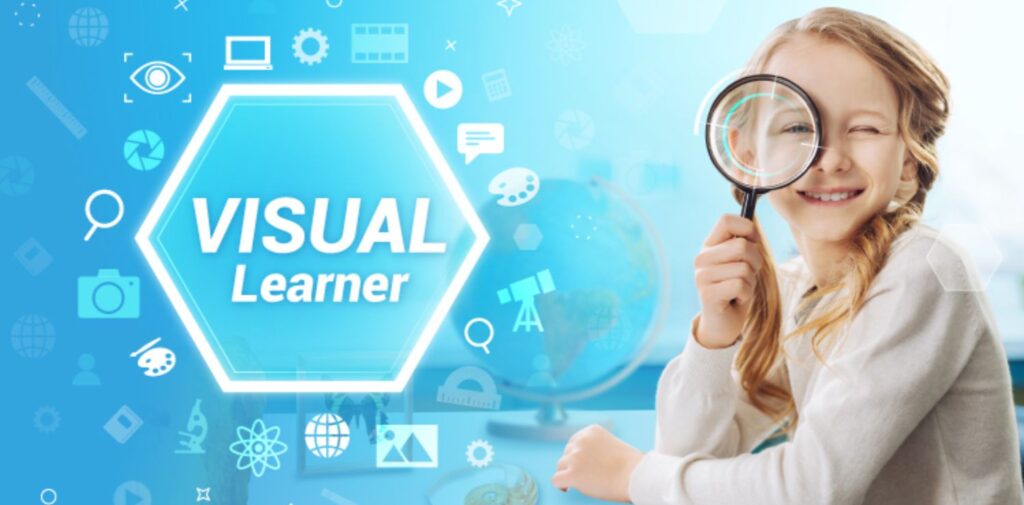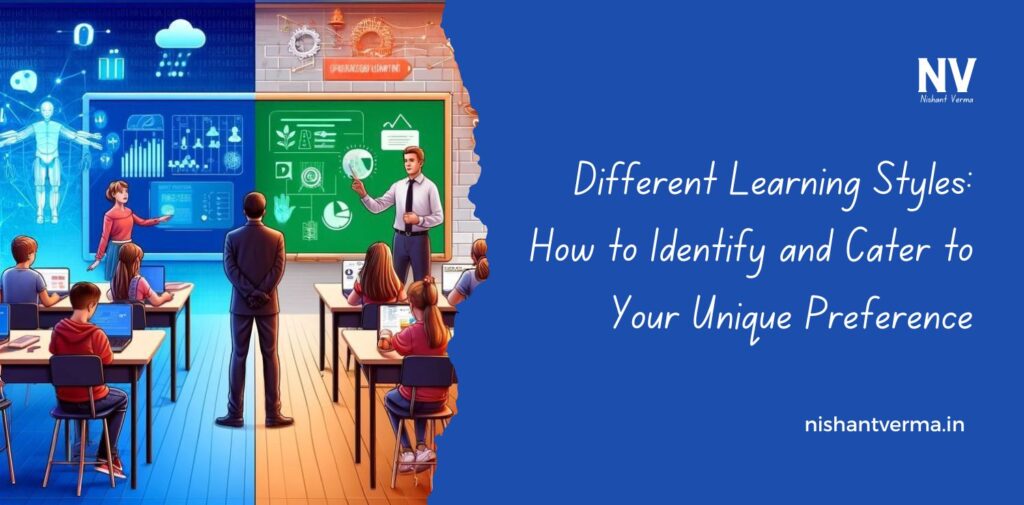Have you ever wondered why some people find it easy to understand things by just reading, while others need to hear it or do it themselves to really grasp the concept? Or maybe, you’ve noticed that you learn best when you’re shown something, rather than told? These differences in how we learn are not just random—they’re tied to what are known as learning styles.
In India, where education systems are rapidly evolving, understanding and catering to different learning styles is becoming increasingly important. With diverse ways of learning, each student has unique needs. Some students excel in traditional classroom settings, while others need more personalized approaches. In this article, we will explore different learning styles, help you identify your own, and provide tips on how you can tailor your learning to match your preferred style.
What Are Learning Styles?
Learning styles refer to the different ways people learn. Everyone has a unique combination of preferences, which can affect how we absorb, process, and retain information. Understanding your learning style can help you study more effectively, retain information better, and feel more confident in your learning abilities.
There are generally three main learning styles: Visual, Auditory, and Kinesthetic. But some people may also use a combination of these styles. Let’s explore each one in detail with examples to help you better understand how you can identify your own learning preference.

Visual Learning Style
Who is a visual learner?
Visual learners understand and remember information best when it is presented in a visual format. They prefer to see pictures, diagrams, charts, and videos that help them understand concepts clearly.
How do you know if you are a visual learner?
If you find that you remember things better when they are written down or presented as diagrams, graphs, or illustrations, you might be a visual learner. For example, in class, if you find it easier to understand a topic after looking at a diagram or watching a video, instead of just reading a textbook, you may lean towards this learning style.
Tips for visual learners:
- Use color-coded notes: When taking notes, use different colors to highlight important points. This will help you remember better.
- Draw diagrams or mind maps: Visual learners often benefit from seeing the connections between ideas. Drawing a mind map can help.
- Watch educational videos: Platforms like YouTube and other learning apps have a lot of visual content to help you understand topics.
- Use flashcards: Flashcards with images and key points can be a great way to reinforce your learning.
Example:
Ravi is a student from a small town in India. He often struggles to understand concepts in physics when his teacher just explains them verbally. However, when his teacher shows him a diagram or video explaining the same concept, Ravi finds it much easier to understand and remember.

Auditory Learning Style
Who is an auditory learner?
Auditory learners grasp information better when they hear it. These learners prefer to listen to lectures, discussions, or podcasts. They tend to remember things they hear, like instructions or stories, more effectively than things they see or read.
How do you know if you are an auditory learner?
If you are someone who finds it easier to understand concepts after listening to explanations or discussions, you might be an auditory learner. You might also prefer listening to podcasts, music, or audiobooks rather than reading from a textbook.
Tips for auditory learners:
- Listen to podcasts or audiobooks: For subjects you’re studying, search for educational podcasts that explain the content.
- Join group discussions: Talking through a topic with friends or classmates can help reinforce your understanding.
- Record lectures: If allowed, record your teacher’s lectures and listen to them later.
- Read aloud: When studying, try reading your notes or textbook out loud. This helps reinforce your learning by hearing the words.
Example:
Aarti, a college student from Bangalore, learns best by listening. When studying for her exams, she records her notes and listens to them on her way to college. She also prefers discussing subjects with her friends rather than reading on her own.

Kinesthetic Learning Style
Who is a kinesthetic learner?
Kinesthetic learners are hands-on learners who prefer to learn by doing. They understand things better when they can touch, feel, or physically engage with the subject matter. For example, rather than reading about how a machine works, they would rather disassemble it and see it for themselves.
How do you know if you are a kinesthetic learner?
If you find it difficult to sit still and pay attention for long periods, or if you need to engage in physical activity to learn, you may be a kinesthetic learner. Kinesthetic learners often excel in subjects that involve physical skills, such as sports or performing arts.
Tips for kinesthetic learners:
- Engage in hands-on activities: Participate in activities or experiments related to the topic you are studying. For example, science experiments or building models can help you understand concepts better.
- Use role-playing: If you are learning history or literature, try acting out events or scenes.
- Take breaks and move around: Stand up, stretch, or walk around while reviewing notes. This can help you focus better.
- Use physical objects for learning: When studying math, use objects like counting beads or blocks to visualize concepts.
Example:
Ajay is a high school student in Delhi who struggles with sitting through long lectures. However, when he is asked to work on a project that involves building something or testing a concept, he quickly grasps the idea. For instance, in a science class, when Ajay was asked to build a simple circuit, he learned much faster than when he was just reading the theory.

Mixed or Multi-Modal Learners
Who are multi-modal learners?
Some people don’t fall neatly into one of the categories above. They may have a combination of learning preferences and use different methods to learn depending on the situation. These learners are known as multi-modal learners.
How do you know if you are a multi-modal learner?
If you find that different methods help you understand different subjects or topics, or if you switch between visual, auditory, and kinesthetic methods while studying, you might be a multi-modal learner. For example, you may use a combination of watching videos, reading, and discussing topics with friends to fully understand them.
Tips for multi-modal learners:
- Mix and match learning styles: Don’t limit yourself to one method. For example, watch a video (visual), listen to a podcast (auditory), and try doing hands-on activities (kinesthetic).
- Experiment: Try different methods of studying for different subjects. Some subjects may require more visual content, while others may require more practice or discussion.
- Adapt based on your mood: Depending on how you feel or what you are learning, switch between different styles for better results.
Example:
Priya, a university student from Chennai, is a multi-modal learner. While studying for her exams, she watches YouTube videos on her subject (visual), listens to related podcasts on the topic (auditory), and also engages in group discussions with her friends (kinesthetic). By combining these methods, she feels more confident in her learning.
Conclusion: Discover Your Learning Style
Recognizing your learning style is an important step in improving how you study. Once you understand your preferred learning style, you can tailor your study habits to match it, making learning more enjoyable and effective.
For students in India, where education is rapidly evolving with technology, adapting your learning methods can be a game-changer. Whether you’re a visual learner, auditory learner, kinesthetic learner, or multi-modal learner, you can use these insights to enhance your learning experience and improve your academic performance.
Remember, there is no “one-size-fits-all” approach. What works for one person may not work for another, so take the time to discover what suits you best. And most importantly, embrace your unique learning style, because understanding how you learn is the first step towards achieving your educational goals!




